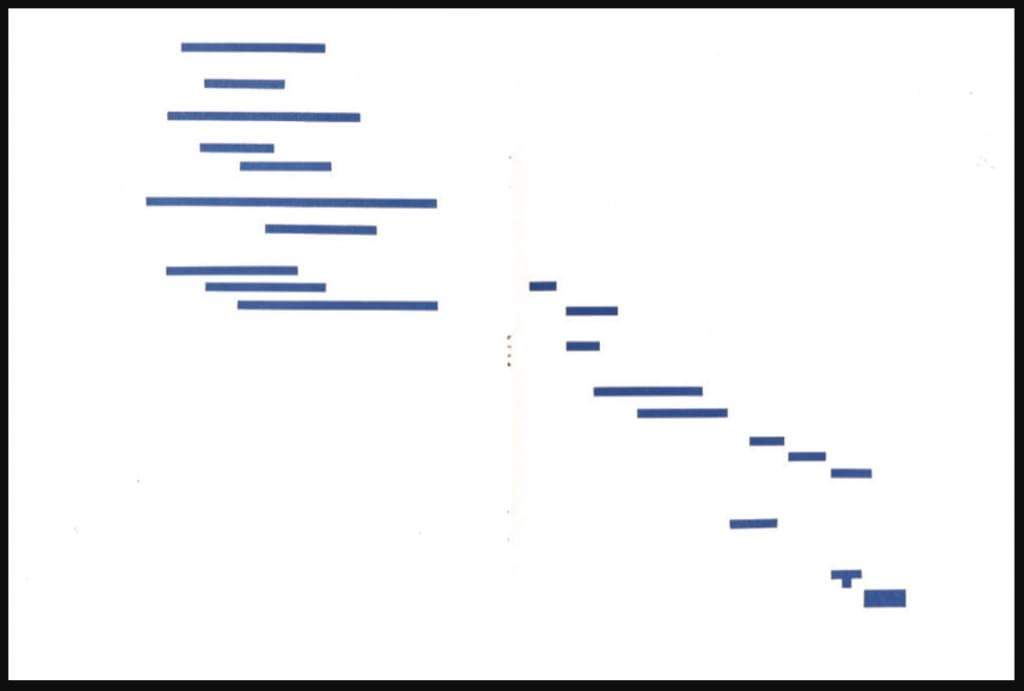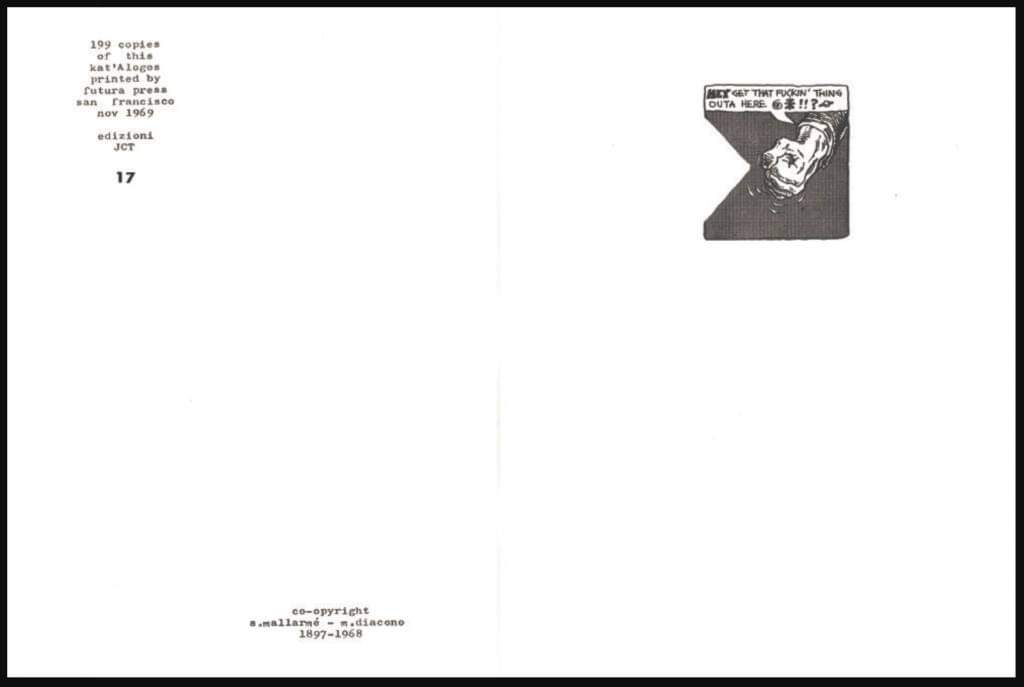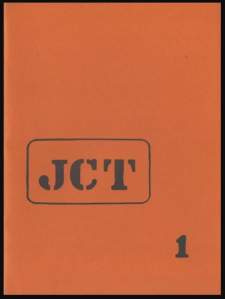MARIO DIACONO
a METRICA n’aboolira
JCT, San Francisco, 1969
Libro d’artista costituito da tre pagine introduttive con un fumetto detournato a cui segue il frontespizio stampato in nero e arancio. Le altre pagine sono percorse da strisce variamente disposte orizzontalmente, di diversa larghezza e lunghezza e di colore arancio e bleu: chiara ripresa in termini esclusivamente visuali dell’opera di Stéphane Mallarmé «Un coup de dès jamais n’abolira le hazard» nell’edizione Gallimard pubblicata postuma (1914), in cui le parole sono disposte variamente sulla pagina bianca secondo le disposizioni del poeta.

La stessa operazione artistica viene compiuta nello stesso anno da Marcel Broodthaers con il suo: «Un Coup de Dés Jamais N’Abolira Le Hasard. Image»: le parole del testo di Mallarmé sono sostituite da strisce nere corrispondenti esattamente al layout tipografico usato per articolare il testo originale: i versi vengono resi illeggibili e le pagine trasformate in immagini. E’ da notare che l’anno di pubblicazione del libro di Diacono è il 1969 come dichiarato al colophon e non il 1968 come dichiarato in varie bibliografie. “1968” è semplicemente l’anno di redazione, indicato al frontespizio e nel copyright: “S. Mallarmé – M. Diacono 1897-1968”.

“Quando costruivo JCT 1 [A metrica n’aboolira], non avevo idea di cosa Broodthaers stesse facendo. Certamente qualcosa “era nell’aria”. La devoluzione della scrittura poetica in direzione astratta iniziata dalla poesia concreta doveva in qualche modo arrivare a una forma di cancellazione come affermazione. Mallarmé era l’archetipo che doveva essere confrontato” (Mario Diacono, testo tratto da una e-mail inviata il 20.04.2019 da Mario Diacono a Paolo Tonini).
http://www.arengario.it/opera/a-metrica-naboolira/

(da un post di Sandro Ricaldone)